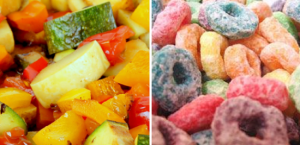
In one neighborhood, parents routinely dither over which blend of fair-trade organic coffee to buy. A few miles away, children often go hungry or subsist on junk food. That dichotomy is at the heart of America’s food problems. We are a land of plenty where people can be simultaneously poor and fat. In fact, the poorer you are, the more likely you are to be fat.
That’s because food — not fashion or clothes or cars — has become “the definitive marker of social status,” according to Lisa Miller. Her Nov. 22 Newsweek cover story, “Divided We Eat,” provides a long overdue exploration of what food says about class in America.
“As the distance between rich and poor continues to grow, the freshest, most nutritious foods have become luxury goods that only some can afford.”
Miller refers to the work of Adam Drewnowski, an epidemiologist who has spent his career showing how Americans’ food choices correlate to social class. He argues “that the most nutritious diet—lots of fruits and vegetables, lean meats, fish, and grains—is beyond the reach of the poorest Americans, and it is economic elitism for nutritionists to uphold it as an ideal without broadly addressing issues of affordability.”
Hallelujah! He took the words right out of my mouth.
Whether you’re a devout vegan or a paleo fanatic, a locavore or a low-carb believer, to idealize any diet as the way all people should eat without considering the barriers that make it impossible for people to do so, doesn’t promote change or inspire healthy living. It just reinforces existing inequalities.
You Are What You Eat – http://www.toquemag.com/back-kitchen/you-are-what-you-eat